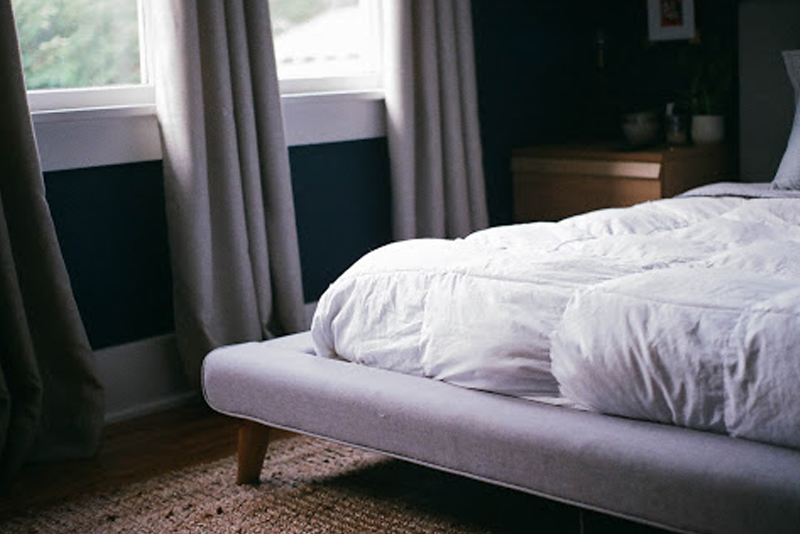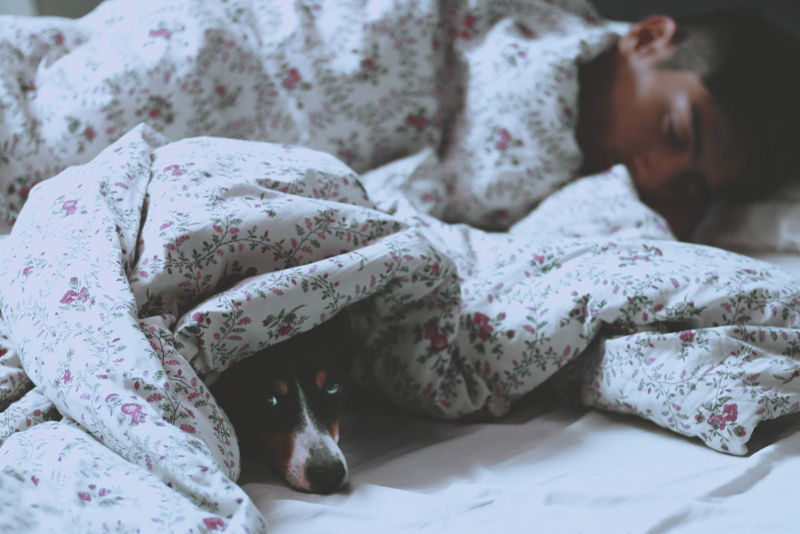Our beds should be a place where we enjoy comfort and sleep. There’s nothing better than climbing into bed with fresh crisp sheets on your mattress. Washing your bed sheets is necessary to get rid of the smell, dirt, stains, sweat, dead skin cells, and other debris that have accumulated.
Here are a few basic tips to wash bed sheets properly:
- Read labels. Most bed sheets and pillowcases can be washed using a washing machine, but you should read the labels to check for any cleaning requirements specific to the material. Specialty fabrics may have specific washing instructions to maintain the bedding.
- Use the hottest water setting. When it comes to washing your soiled bedding and linens, it is best that you use the hottest water temperature as much as possible to help kill any germs, bacteria, or dust mites in your bedding.
- Hanging sheets to dry. Once you have finished washing your bed sheets you may choose to hang them to dry as you’ll want to maintain the shape and elasticity, especially with fitted sheets. But, if you use a dryer, use a low heat setting [1].
- Iron your linens. If you choose to iron linen sheets, do so while they are still a bit damp. Iron in a back-and-forth motion the entire length of the cloth. Follow the weave.

How to Wash Special Fabrics
If you want to know how to wash bed sheets, you will need to take into account what your fabric choice. Keep in mind that there are special fabrics used in bed sheets that will require different methods of cleaning and washing. Here are some examples to consider:
- Linen. Linen fibers are similar to cotton, but the difference is that the fibers are weaker compared to its counterpart. Thus, extra attention is required. Instead of using the hottest temperature, choose cold water during your wash cycle and opt for a gentle detergent when you do your laundry to minimize the damage to the fibers in your sheets.
- Silk and satin. Silk and satin are both considered delicate fabrics. It’s essential you check the manufacturer’s label. Some fabrics may require you to hand wash versus throwing them in a washer. In general, use a mild detergent, on a gentle cycle, and cold water when washing. When cleaning, avoid mixing heavier fabrics with silk sheets. Make sure that you are not using any chemical additive or bleach in your wash since this can damage silk and satin sheets. Don’t dry your delicate fabrics in a hot dryer, but rather use a no-heat cycle or air dry them whenever possible.
- Wool sheets. Wool sheets can be washed in your laundry. Use cold water in your washing machine washing machine and run it in a gentle cycle. When drying, tumble dry on air dry.
- Flannel. Flannel can be made from synthetic fiber, cotton, or wool. When it comes to washing flannel sheets, do them separately. This is because they may deposit lint on other fabrics in your washer. When drying, choose low-temperature settings and avoid overdrying your fabric as this can cause wrinkles to appear and the color of your sheets to fade.
- Microfiber. Microfiber sheets tend to last longer when compared to bamboo, cotton, and silk. Another plus to using this type of sheet is that no extra care is required. When it comes to cleaning microfiber sheets, you can use either cold or warm water for washing. Avoid hot water, as this can melt the fibers of your sheets leaving them wrinkled. Also, when washing microfiber sheets avoid using fabric softener which can clog the spaces between the weaves of the fabric. When drying, you can let them air dry or use low heat.
How Often Should You Wash Bed Sheets?
Correct timing is also essential when learning when and how to wash bed sheets. Bedding should be washed and changed weekly or bi-weekly. Leaving your sheets on for longer than this can cause skin irritations due to the dust, dirt, sweat, and body fluids.

Common Mistakes When Washing Sheets
Wash bed sheets every week and leave your sheets feeling crisp and clean to enjoy for a good night’s sleep. But even though it is good to wash your sheets regularly, there are several mistakes that we make when it comes to washing sheets. Here are a few tips and what to avoid when washing your sheets.
- Overloading the washer. It’s quite tempting to put all of your bedding in your washer to save time, but you should resist the urge. Keep in mind that your sheets need room to circulate for the dirt, dust, and mites to be removed. If there is an agitator in the center, don’t wrap your sheets around it as it can cause undue wear and tear. A better option might be to lay the sheets in separately.
- Drying too long. Over-drying can be a problem. Set on low heat (or air dry) for the shortest time possible.
- Wrong setting. Avoid using the heavy duty cycle. Washing your sheets on the delicate or regular setting works well to avoid wrinkles. Also, avoid too hot of a setting so that you prevent shrinkage of your fitted sheets.
- Drying your sheets with towels. Never dry your sheets with bath towels. Towels take much longer to dry. Also, more delicate textiles can be damaged by heavier towels. However, you can wash your sheets along with your smaller kitchen towels unless the manufacturer specifies otherwise.
- Waiting too long between washing. Body oils, sweat, and germs accumulate easily on our beds. Leaving your dirty sheets on for more than two weeks can leave you exposed to dust mites, germs, bacteria, and skin irritations.
- Forgetting to pre-treat stains. Some of us tend to overlook the stains in our sheets, especially small food stains. Before you start washing your beddings and pillows, make sure that you pre-treat the stains using liquid detergent, a specific stain remover or baking soda. For stain remover, follow the instructions printed on the package. When using baking soda, mix baking soda with water to make a paste. Using a soft brush, gently rub the paste in using a circular motion.
- Too much fabric softener. Fabric softeners and dryer sheets can reduce the textile’s absorbability and breathability. Why? Fabric softeners and dryer sheets coat the material. Instead, try adding ½ cup distilled white vinegar to the final cycle. Vinegar naturally softens materials and does not leave a residue or odor when dry.

Beyond Bed Sheets – Additional Washing Tips
- Duvet Covers, Duvets, And Comforters. As with sheets, look at the manufacturer’s tag to determine how to wash a duvet cover, a duvet or a comforter. Washing and drying instructions will depend on the textile. Comforters, bulky blankets, and thicker duvets should be cleaned 2-3 times a year.
- Pillows. These days pillows come in all varieties. Some are dual-layered with special inner cores. These may require special care. For instance, the inner pillow may not machine washable while the outer layer may be cleaned in a washer and dryer. Spot cleaning with baking soda is an option for pillows that cannot be washed. Other pillows, such as a feather or down pillow, can be put in a washer.
- Shower Curtains. Shower curtains are often forgotten as some do not consider them linens. Depending on the material, you may be able to put it in the washer. During the wash cycle, add a half cup of baking soda. Add a half cup distilled white vinegar during the rinse cycle. Use a gentle wash cycle. This combination cleans, freshens, and gets rid of any possible mold or mildew. Hang the shower curtain to dry. You can also hand wash your shower curtain by using a damp microfiber cloth and sprinkling baking soda on it.
A Last Word
Knowing the correct way for how to wash bed sheets and other bedding is essential for good sleep hygiene. Not only will you be more comfortable, but you will avoid exposing yourself to allergens and other health risks. Changing your sheets on a regular basis, washing your outer bedwear when appropriate, and vacuuming your mattress at least twice a year all contribute to getting a good night’s sleep.
Resources:
https://home.howstuffworks.com/home-improvement/household-hints-tips/cleaning-organizing/question358.htm


